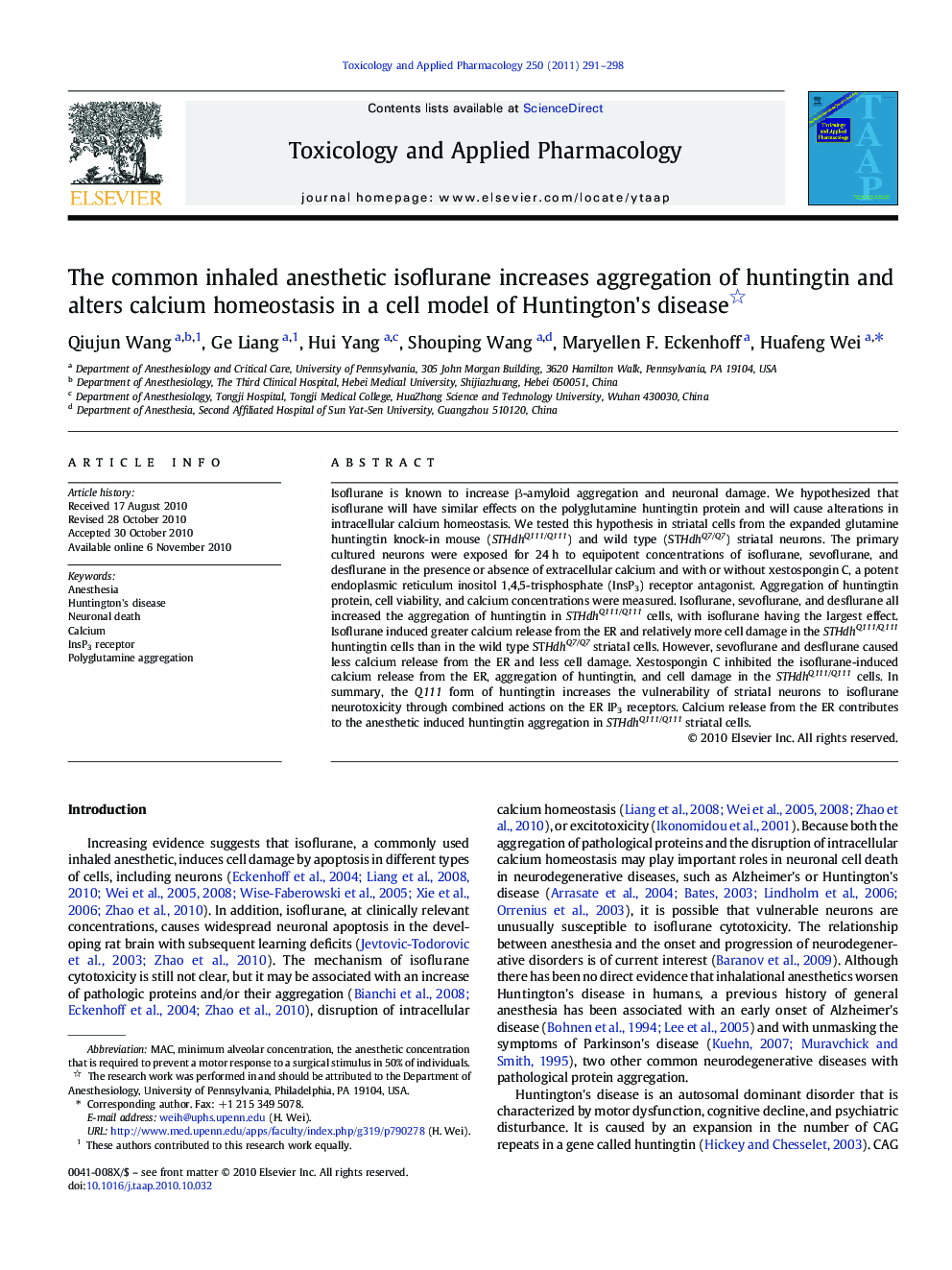| Article ID | Journal | Published Year | Pages | File Type |
|---|---|---|---|---|
| 5846883 | Toxicology and Applied Pharmacology | 2011 | 8 Pages |
Isoflurane is known to increase β-amyloid aggregation and neuronal damage. We hypothesized that isoflurane will have similar effects on the polyglutamine huntingtin protein and will cause alterations in intracellular calcium homeostasis. We tested this hypothesis in striatal cells from the expanded glutamine huntingtin knock-in mouse (STHdhQ111/Q111) and wild type (STHdhQ7/Q7) striatal neurons. The primary cultured neurons were exposed for 24 h to equipotent concentrations of isoflurane, sevoflurane, and desflurane in the presence or absence of extracellular calcium and with or without xestospongin C, a potent endoplasmic reticulum inositol 1,4,5-trisphosphate (InsP3) receptor antagonist. Aggregation of huntingtin protein, cell viability, and calcium concentrations were measured. Isoflurane, sevoflurane, and desflurane all increased the aggregation of huntingtin in STHdhQ111/Q111 cells, with isoflurane having the largest effect. Isoflurane induced greater calcium release from the ER and relatively more cell damage in the STHdhQ111/Q111 huntingtin cells than in the wild type STHdhQ7/Q7 striatal cells. However, sevoflurane and desflurane caused less calcium release from the ER and less cell damage. Xestospongin C inhibited the isoflurane-induced calcium release from the ER, aggregation of huntingtin, and cell damage in the STHdhQ111/Q111 cells. In summary, the Q111 form of huntingtin increases the vulnerability of striatal neurons to isoflurane neurotoxicity through combined actions on the ER IP3 receptors. Calcium release from the ER contributes to the anesthetic induced huntingtin aggregation in STHdhQ111/Q111 striatal cells.
